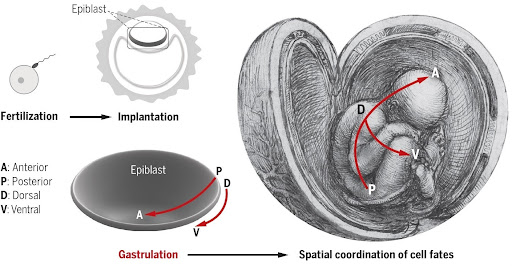Internationalization and the EUTOPIA network of universities, the main thread of the 7th edition of the magazine 360upf
Internationalization and the EUTOPIA network of universities, the main thread of the 7th edition of the magazine 360upf

The seventh issue of 360upf, the University’s digital magazine that reviews current issues in an innovative format, has recently been published. Internationalization in the field of higher education and the EUTOPIA project of the alliance of European universities to which UPF has belonged since December 2109, are the focus of this edition.
Around this theme, the autumn issue of the magazine, available in three languages (Catalan, Spanish and English), devotes the presentation, the sections “Community”, with a lengthy report presenting EUTOPIA as a seed for future European universities, and “Zoom”, with an interview with Ferran Piqué, a student on the bachelor’s degree in Business Sciences-Management, one of the project ambassadors.
For further analysis, the section “Kaleidoscope”, entitled “Rethinking internationalization” includes opinion articles written by five renowned experts in the field of higher education in Europe. Isabel Valverde, a lecturer with the Department of Humanities and UPF vice-rector for internationalization projects, signs the “Special kaleidoscope” section, with an article in which she portrays internationalization as an essential driver of the University, which is complemented with several graphics.
The 7th issue of the magazine presents other content related to the internationalization of UPF, but in a more tangential manner: an interview with Mireia Trenchs, full professor of English Philology at the Department of Humanities, who is the guest of the “Profile” section; and two reports: the first, in the “Our alumni” section, which illustrates the background and projects of some twenty UPF alumni around the world, and the second, which reviews the work of UPF Language Volunteering, on the occasion of its 20th anniversary.
This edition of 360upf is completed by the “From campus” section, with a report devoted to the Diari de Barcelona, the oldest daily paper in continental Europe, which was re-launched last April thanks to an agreement between UPF and Barcelona City Council; “Quiztime”, dedicated to the 250th anniversary of the birth of Ludwig van Beethoven; “Panoramic view”, which takes a look at the essential news of the University, and the inaugural poster of the 2020-2021 academic year, a work by Albert Serra i Juanola.
Related Assets
A new perspective of the key moments of embryonic development
Alfonso Martínez Arias, head of the Stembryo Engineering Lab at UPF, participates in a review published in Science in which the authors offer offer a new perspective of the role of a structure in embryonic development known as the primitive streak.

In a review published in the journal Science, the researchers Guojun Sheng (Kumamoto University, Japan), Alfonso Martínez Arias (UPF) and Ann Sutherland (University of Virginia Health System, USA) offer a new perspective of the role of a structure in embryonic development known as the primitive streak. The primitive streak was established as the first sign of the human being during development and therefore current regulations in many countries do not allow embryos to be grown beyond its appearance, 14 days after fertilization.
In the present study, the scientists perform a synthesis of what is known about this structure including recent studies on models of embryonic processes based on stem cells. The authors conclude that the primitive streak is not necessary for the organization of the embryo. They suggest, therefore, that the choice of the appearance of this structure as the first indication of the human being, the “14-day rule”, is arbitrary. Recently, technical advances have recommended a review of this rule to allow experimenting with embryos beyond day 14; this work provides scientific arguments to support such a change.
The primitive streak was established as the first sign of the human being during development and therefore current regulations in many countries do not allow embryos to be grown beyond its appearance, 14 days after fertilization.
A human being starts from the fertilized egg that splits successively to form a mass of cells. A week after fertilization it implants into the uterus and seven days later gastrulation begins. This process transforms what is a mass of cells into a structure where an outline of the organism can be recognized, with the head at one end and the structures that will give rise to the organs and tissues perfectly positioned in their right places. The recently deceased biologist Lewis Wolpert coined the famous adage that the most important moment of our lives is not birth, marriage or death, but gastrulation. The primitive streak is an iconic structure of gastrulation that exists in all mammals, reptiles and birds.
Implications of the primitive streak in early embryogenesis models
Experimentation with human embryos derived from in vitro fertilization and similar structures with stem cells is highly regulated. It is possible in the laboratory to grow human pluripotent cells before gastrulation and by adding biochemical signals, guide them to differentiate into different cells. However, their culture in functional tissues or organs has rarely been successful because the organ-forming process begins immediately after gastrulation. Reproducing rudimentary organs in vitro is the holy grail in research into stem cell biology and regenerative medicine, but achieving it would require reproducing gastrulation and its associated primitive streak.
Their arguments support that 14th day rule, which was put forward in the 1980s as a response to the possibilities derived from the cultivation of human embryos for in vitro fertilization based on the knowledge of the time, should be reassessed.
Through a systematic review of previous research, the team of scientists has evaluated the relationship between the primitive streak and the appearance of a human being from the current perspective and, in particular, from studies with stem cells. Their analyses of different biomechanical parameters among multiple in vivo and in vitro models predict that a rudimentary mammalian body plan can be formed in the absence of a primitive streak. “We conclude that the primitive streak is not absolutely necessary to make an outline of the organism”, Alfonso Martínez Arias, ICREA research professor and head of the Stembryo Engineering Lab, explains.
“Hence our arguments support that 14th day rule, which was put forward in the 1980s as a response to the possibilities derived from the cultivation of human embryos for in vitro fertilization based on the knowledge of the time, should be reassessed. Of course, this line of reasoning does not discuss the need for ethical oversight in human-related developmental and stem cell biology research, but we propose selecting an alternative landmark through a consensual discussion to ensure scientific and ethical rigour”.
Reference article:
The primitive streak and cellular principles of building an amniote body through gastrulation. DOI: 10.1126/science.abg1727.




